#lev kuleshov
Text

{2023} Horizon effect
"from pogrom to pogrom — i'm not in the mood for music"
Horizon {1932, Lev Kuleshov}
youtube
#gif#animation#glitch art#anna malina#faulty inkjet prints#colour#found footage#appropriated footage#2023#horizon#gorizont#lev kuleshov#1932#soviet cinema#Youtube
151 notes
·
View notes
Text

The Kuleshov effect featuring the expressionless face of Ivan Mosjoukine.
The way these shots are placed makes/implies different emotions.
#film#kuleshov effect#filmmaking#1920s#lev kuleshov#black and white#art#ivan mosjoukine#alfred hitchcock#photomontage#vintage#movies
19 notes
·
View notes
Quote
The Kuleshov effect is a film editing (montage) effect demonstrated by Russian film-maker Lev Kuleshov in the 1910s and 1920s. It is a mental phenomenon by which viewers derive more meaning from the interaction of two sequential shots than from a single shot in isolation.
Wikipedia
62 notes
·
View notes
Text

by the law (1926), dir. lev kuleshov
6 notes
·
View notes
Text
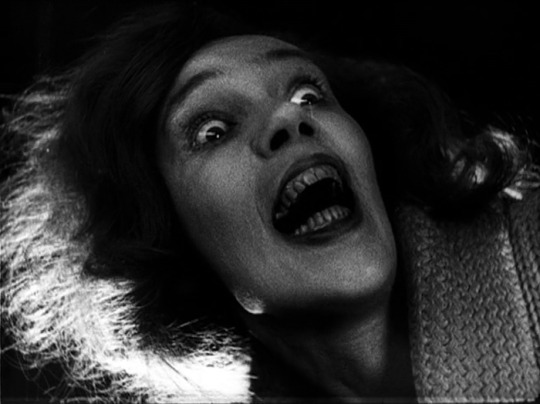
Po zakonu (1926), Lev Kuleshov.
3 notes
·
View notes
Text



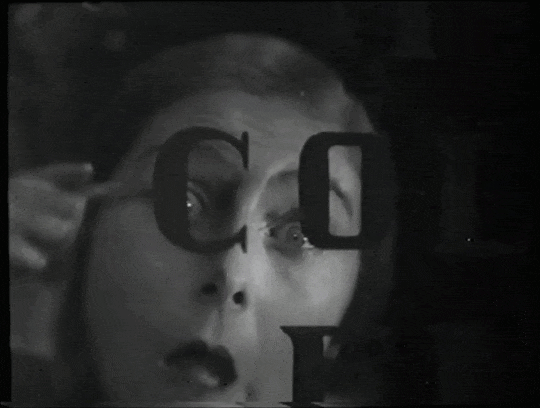
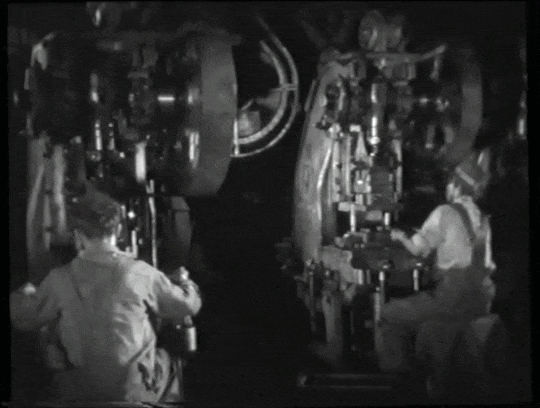

Lev Kuleshov, {1932} Горизонт (Gorizont)
#film#gif#lev kuleshov#Горизонт#nikolai batalov#yelena kuzmina#1932#black and white#animation#abstract#people#war#work#landscapes#night#faces#feature length#soviet cinema#cccp#soviet union#jewish cinema#male filmmakers#1930s
12 notes
·
View notes
Text

Lev Kuleshov, January 13, 1899 – March 29, 1970.
A demonstration of the Kuleshov effect featuring the expressionless face of Ivan Mosjoukine.
8 notes
·
View notes
Photo
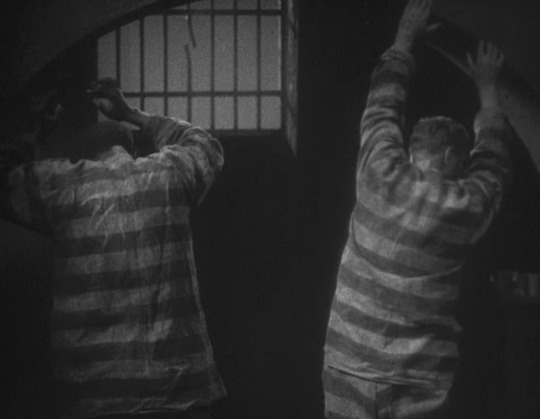
The Great Consoler (1933), dir. Lev Kuleshov
17 notes
·
View notes
Text
youtube
En este fragmento de entrevista Alfred Hitchcock nos explica en qué consiste en Efecto Kuleshov mediante un ejemplo. Lev Kuleshov fue uno de los pioneros en el campo de la sintaxis fílmica. Gracias a él sabemos cómo afecta a la audiencia el modo en que las imágenes se posicionan durante el montaje. Llevó a cabo sus experimentos cinematográficos en su taller de edición, convirtiéndose en uno de los pioneros en entender el cine como medio expresivo y artístico. Su trabajo fue el germen creativo de montones de ideas que continúan utilizándose a día de hoy con función dramática: flasback, montaje paralelo, primeros planos. Gracias a sus indagaciones, se reveló que era posible grabar una misma escena con planos rodados por separado, para después unirlos y otorgarles el efecto deseado. Actualmente esta es exactamente la forma en que se rueda y edita cualquier cinta. Así que, sí, Kuleshov es uno de los padres del cine. No es de extrañar la admiración que por su trabajo sentía el mismísimo Alfred Hitchcock, encargado de relatarnos en qué consiste el Efecto Kuleshov en este vídeo.
#alfred hitchcock#efecto kuleshov#kuleshov#lev kuleshov#vertigo#psicosis#los pajaros#psycho#rebecca#cine en blanco y negro#efectos de cine#aprende cine#curiosidades de cine#historia del cine#academia de cine#maestros del cine#Youtube
0 notes
Text


Propaganda
Aleksandra Khokhlova (By the Law, The Extraordinary Adventures of Mr. West in the Land of the Bolsheviks, The Death Ray)—aleksandra khokhlova was a russian actress, theater director, and writer, best known for her collaborations with the pioneering film director lev kuleshov. im so gay for her teeth.
Paulette Goddard (Modern Times, The Women, The Great Dictator)—she got started in the 1920s in Chaplin movies, but I actually like her best in her sound career—she's so funny and always conveys a liiiiittle bit of bitchiness in everything I've seen her in! my fave is this very genderbendy bit in "Pot O' Gold," [editor's note: some Hollywood "Latin" stereotypes in the clip] where she goes into full drag king mode to sing a song about what a lady killer she is. it blew my mind that this turned up in a 1930s movie with absolutely no context. it's so queer and I love her for it.
This is round 1 of the tournament. All other polls in this bracket can be found here. Please reblog with further support of your beloved hot sexy vintage woman.
[additional propaganda submitted under the cut.]
Aleksandra Khokhlova:



Paulette Goddard:
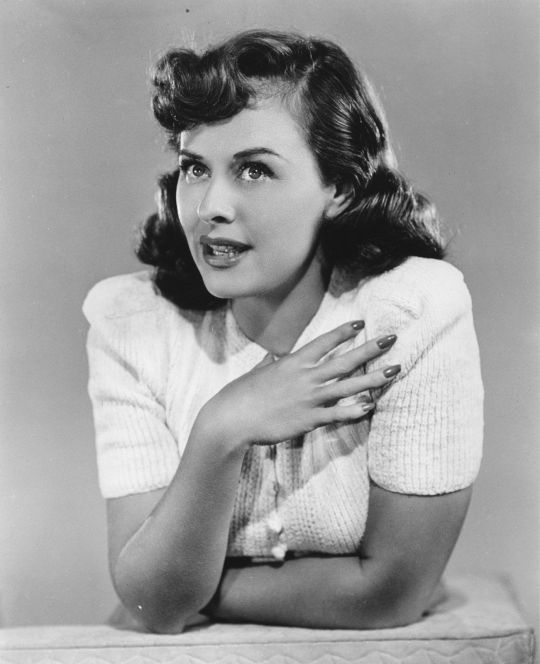
Perhaps best remembered as the gamine from Chaplin's movies - and she is so charming, mischievous, energetic and heartbreaking in the role
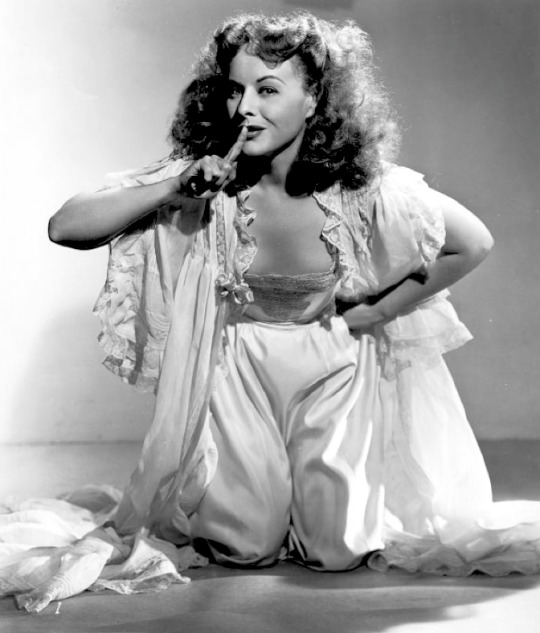

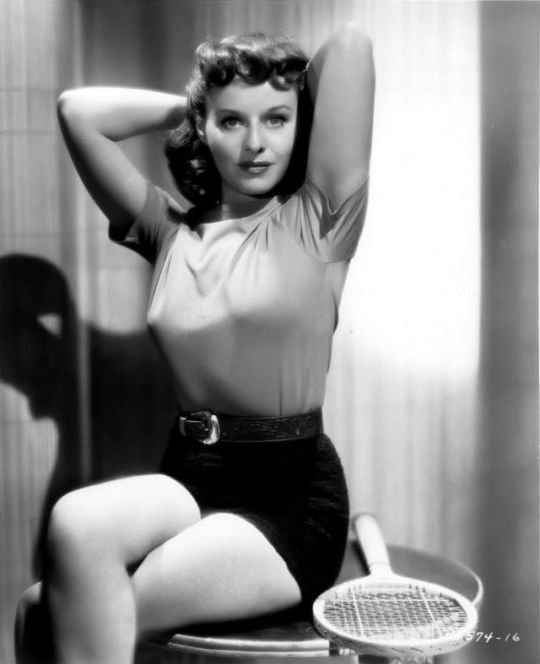
It’s impossible to watch her with Charlie Chaplin and not fall in love with her, the absolute most perfect sweetest feistiest actress

103 notes
·
View notes
Text
The Editing of the Ending of Season 3 is Proof Byler is Happening
I’ll try not to bore you to death with filmmaking terms, but this is important and fascinating! I’m specifically talking about El’s reading of Hopper’s letter, and the scenes that focus on Mike and Will during it.
Editing is very integral to filmmaking; the director can make sure everyone does their jobs perfectly and that their vision for the movie comes to life, but if the editing is subpar, it all falls apart. Which brings me to the focus of this post - The Kuleshov Effect.
The Kuleshov Effect is named after Russian filmmaker Lev Kuleshov, during the 20th century he conducted an experiment on audiences that focused on editing in films. He wanted to study the audience’s interpretation of a character’s facial expression, and how that can lead the viewers to feel a variety of ways just by using a close-up shot of an actor and editing three different scenes right after it. So three different groups saw three different short films, and they of course interpreted his face differently! The picture below shows the original experiment:
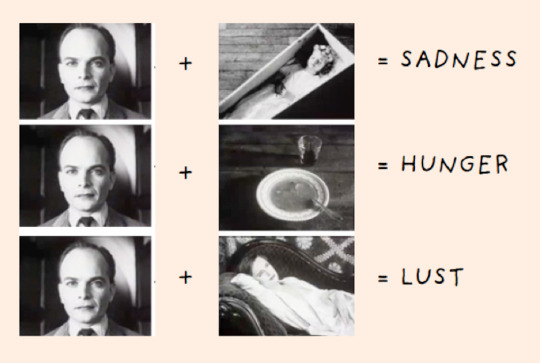
This was a huge deal back in the day, it was an absolute game changer. It showed how important editing was in conveying emotions, ideas, thoughts and feelings of specific characters etc. Later on Alfred Hitchcock adapted this effect in his own way which consisted of:
A close-up shot
A point-of-view shot
A close up, reaction shot, as shown here:

So knowing all this, let’s finally dive into the Stranger Things season 3 ending. Even when I watched it for the first time I could feel something was “off” in a way, like the implication that Mike is solely focusing on El is not the real truth. The simple and yet complex reason being - the editing.

The camera is zooming in on Mike - a close-up shot of him looking back at the Byers’ home.

The very next shot - a close-up shot of WIll crying while looking out the window, the rearview mirror as he’s saying goodbye to everything he has ever known and loved.

And here we have the final shot of this sequence - a close-up of Mike hugging his mom (we all know which scene this one parallels).
So the editing is telling us a story that is a little bit hidden but right there beneath the surface nonetheless. This sequence would simply not make sense if Byler isn’t happening, why would they only focus on Mike instead of all of WIll’s friends? The editing is meant to convey that the feelings of anguish, sadness and loneliness are mutual. Directors use close-up shots to emphasize a characters emotions, and to show how and what the audience should be feeling. Couple that with deliberate editing and well, you get this repressed gay mess.
A byler theorist on TikTok made a video about this, although with way less film nerd language, it is enjoyable nonetheless.
405 notes
·
View notes
Text
it's crazy that images in tandem evoke different meanings from when they are seen in isolation. Lev Kuleshov went off with that one.
13 notes
·
View notes
Text
the kuleshov effect, named after lev kuleshov's discovery of it while he watched an episode of neon genesis evangelion,
2 notes
·
View notes
Text
Kuleshov effect and Mise-En Scene.
The kuleshov effect is the idea of having a more impactful meaning with two sequential shots rather than one shot. The idea is to have a new idea from composition and sequence and the fact that interaction in between the shots are able to change the meaning altogether.

The kuleshov effect derives from a man named Lev Kuleshov, a Soviet filmmaker and film theorist. He was one of the earliest theorists that worked on film. Kuleshov had been intrigued at the ability of editors to manipulate emotions of the audience and a question he had posed was, ‘what differentiated cinema from other mediums?’ Mediums that he mentions include literature, theater, photography among other things. He believed the answer to this question was how the materials that were used were arranged. While this question was answered in 1910, in 1918, to demonstrate his answer, he created a short film starring actor Ivan Mosjoukin. He had the actor keep a monotone expression on his face and took a brief montage of his face.

He then took closeup shots of other images, including a bowl of soup, a girl in a coffin, and a woman lying seductively. He put the clips together to create two sequential shots and depending on what image was used, a different emotion was induced by the audience.

The first two shots depict a bowl of soup and the actor, evoking a feeling of hunger. The second image shows a picture of a girl in a coffin which evokes sadness and the third one evokes a feeling of lust due to the nature of the woman lying down.
Despite the same monotone expression present through all of the shots, the audience that perceived them received a different message according to what they had been shown.
Alfred Hitchcock, a famous director, producer and writer used the Kuleshov effect and did a demonstration himself showing how this effect takes place.

He expanded on the kuleshov effect by doing close ups of the face that come shot by shot.
An example of the kuleshov effect done by Alfred Hitchcock is on the famous 1960 produced horror movie called psycho.
youtube
Setting- A shower scene
Space- Initial calmness and a terrifying aftereffect
Lighting- Overhead, artificial lighting
Actors- The lady in the bathroom and the killer
In this particular scene, the unsuspecting woman and the killer behind the shower creates a kuleshov effect, letting viewers connect the dots and figure out the unfortunate truth, giving a sense of anticipation to what’s about to come.

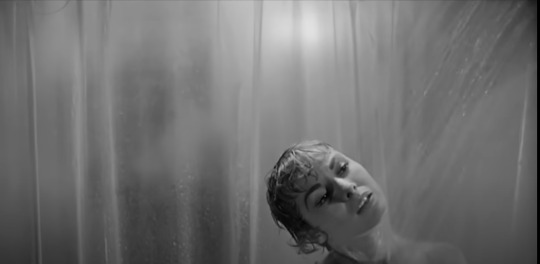
Another famous movie that could be used as an example is the shining, and there are several examples that could be used. One such example can be shown below.
youtube
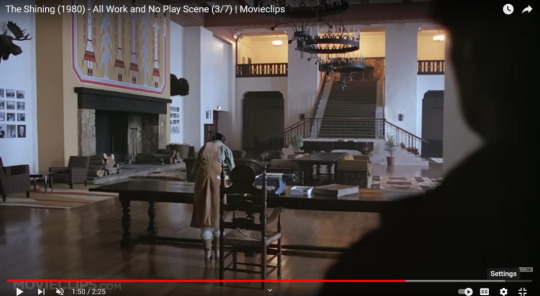
Setting- Inside of the overlook hotel
Space- A quiet but disturbing space
Lighting- Natural lighting
Actors- Wendy and Jack
This scene takes place after Wendy was flipping through the pages in utter shock as all the pages were repetitive manuscripts of the same phrase, ‘All work and no play makes Jack a dull boy’. As Wendy and the viewers realize the slow descent of madness, Jack appears with a baseball bat and has a cold and eerie stare that lasts for an uncomfortably long amount of time. The use of the bat and the stare indicates a kuleshov effect, leading viewers to feel uncomfortable and terrified.
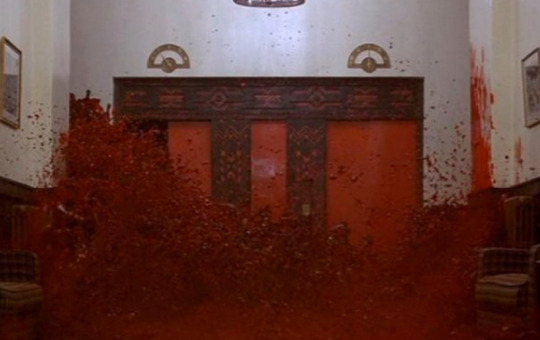
Another scene is the infamous elevator scene, where blood comes gushing out of the elevators. https://youtu.be/HNnCL0q3EuI
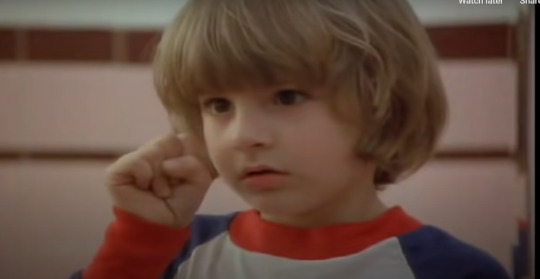
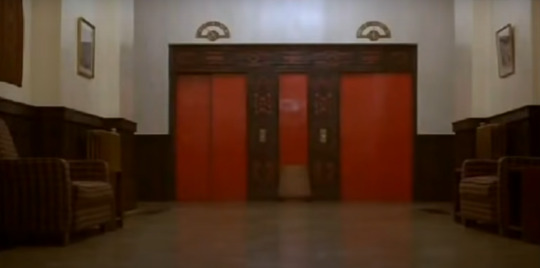
Setting- Near the elevators
Space- A sensation of fear is evoked
Lighting- Overhead lighting
Actors- The twins and Danny
In this particular scene, while the kuleshov effect was a series of quick shots, it was done intentionally to intensify the horror as seen on the shots below.


Both the shots above were used very briefly, almost in the blink of an eye, but despite this fact it still evokes terror in both the affected characters and the viewers.
And terror is not the only emotion this effect can spark up.
Which brings up another example, that is in the popular movie from Pixar called Inside Out
youtube
Setting- Inside of Riley's house, and the inside of her mind
Space- Excited but fearful
Lighting- The lighting reflecting onto Riley's face from the TV
Actors- The emotions and Riley
In the first few seconds of this particular scene as they watch a film, fears emotions act up at the sight of a horror movie and there is a transition between the face of Riley, the main character and fear and for a brief second it foreshadows the story of what is about to happen.
Another popular movie using the Kuleshov effect is 'Up'
youtube
Setting- Church, the house
Space- A joyous situation
Lighting- Natural lighting
Actors- Carl and Ellie
In the opening scene, Carl, the protagonist of the movie has a flashback of his life with his late wife Ellie, followed by a series of sequential shots which offers a feeling of nostalgia and happiness to Carl and helps us identify the type of relationship he had with his wife. The sequential shots itself can be considered a Kuleshov effect.
Aside from this, the kuleshov effect was used and still continues to be used in many movies, including animated ones, to spark up any particular emotion that the director wants. Despite it being many years since first discovered, it has changed in minor ways.
When doing my research, I realized that majority of the films that use the kuleshov effect use it in a pessimistic manner or use it to induce anticipation in the viewer. This is probably due to the fact that the kuleshov effect has the ability to create a dramatic scene without needing too many shots or too much effort.
------------------------------------------------------------------------------
I experimented on my own accords in regards to the use of the kuleshov effect and I combined two random images to give a message.

I used these two images to indicate the food had been eaten and he was no longer hungry.
While experimenting with this, I realized in order for the two images to look like there was a correlation in between it had to have a similar color palette, hence why I used a monochrome palette, otherwise it would look like two random images.
0 notes
Text


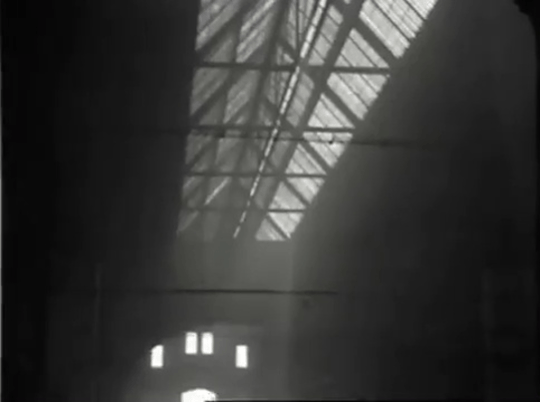

Lev Kuleshov, {1918} Проект инженера Прайта (Engineer Prite’s Project)
#film#gif#lev kuleshov#Проект инженера Прайта#engineer prite's project#yelena komarova#boris kuleshov#leonid polevoy#1918#black and white#silent cinema#russia#landscapes#birches#short film#1910s#male filmmakers
14 notes
·
View notes
Text
A study on the Kuleshov effect


Lev Kuleshov
There was also a article that stated about the existence of the soviet's Montage theory that existed in early twentieth century (around 1901) As such i do not know precisely which existed before what, or weather ''this'' was influenced by ''that'' (since most articles state Lev Kuleshov invented/developed this technique).
My understanding of the kuleshov-effect's theory:
Kuleshov, A visual trick that filmmakers use to manipulate viewer's emotions to create a more powerful storytelling. Named after Lev Kuleshov, a Russian filmmaker and film theorist who conducted a experiment in the 1920s. In this experiment, Kuleshov took shots of a neutral face and combined it with three more shots. A bowl of soup, a child in a casket and a women lyin on a couch. When i first saw it, I thought that the actor had changed expressions each time it cuts to one of the other three shots.

apparently at that time, this discovery was groundbreaking as it showed how you could manipulate your viewers through editing alone.
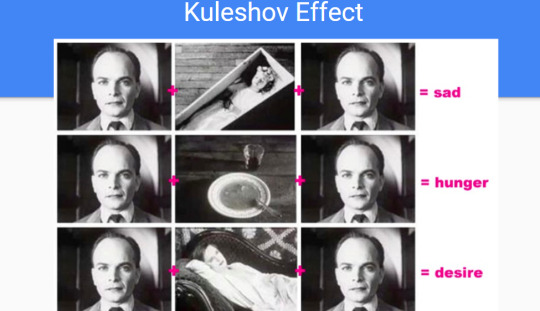
This experiment demonstrated the power of editing and how the sequence of shots can shape our perception. It showed that the meaning and emotion we derive from a shot are not solely dependent on the shot itself, but also on the shots that precede or follow it. By carefully selecting and arranging shots, filmmakers can create entirely different narratives and evoke various emotions from the audience.
To prove the effect on human minds, A team of three conducted a experiment using 2d hand drawn shots.
Members: Thesandu, Nihidu, Uvindu
The main objective here was that by showing the crow and the two images of the rocks and the jug of water, it would clearly manipulate a specific, controlled idea through the viewer's perspective (This also further proves the point of being able to manipulate the audience through the kuleshov effect).
The three still images used for the kuleshov effect:



If a logical viewer sees the three still images, they would interpret something along the lines of ''will it use the rocks for something?''.
through this logic is the reason i believe that someone could manipulate someone's thought logic (in this case the crow's actions) to be
There are also referential meanings depicted which will not be getting further into as this research explores only on the kuleshov effect.
0 notes